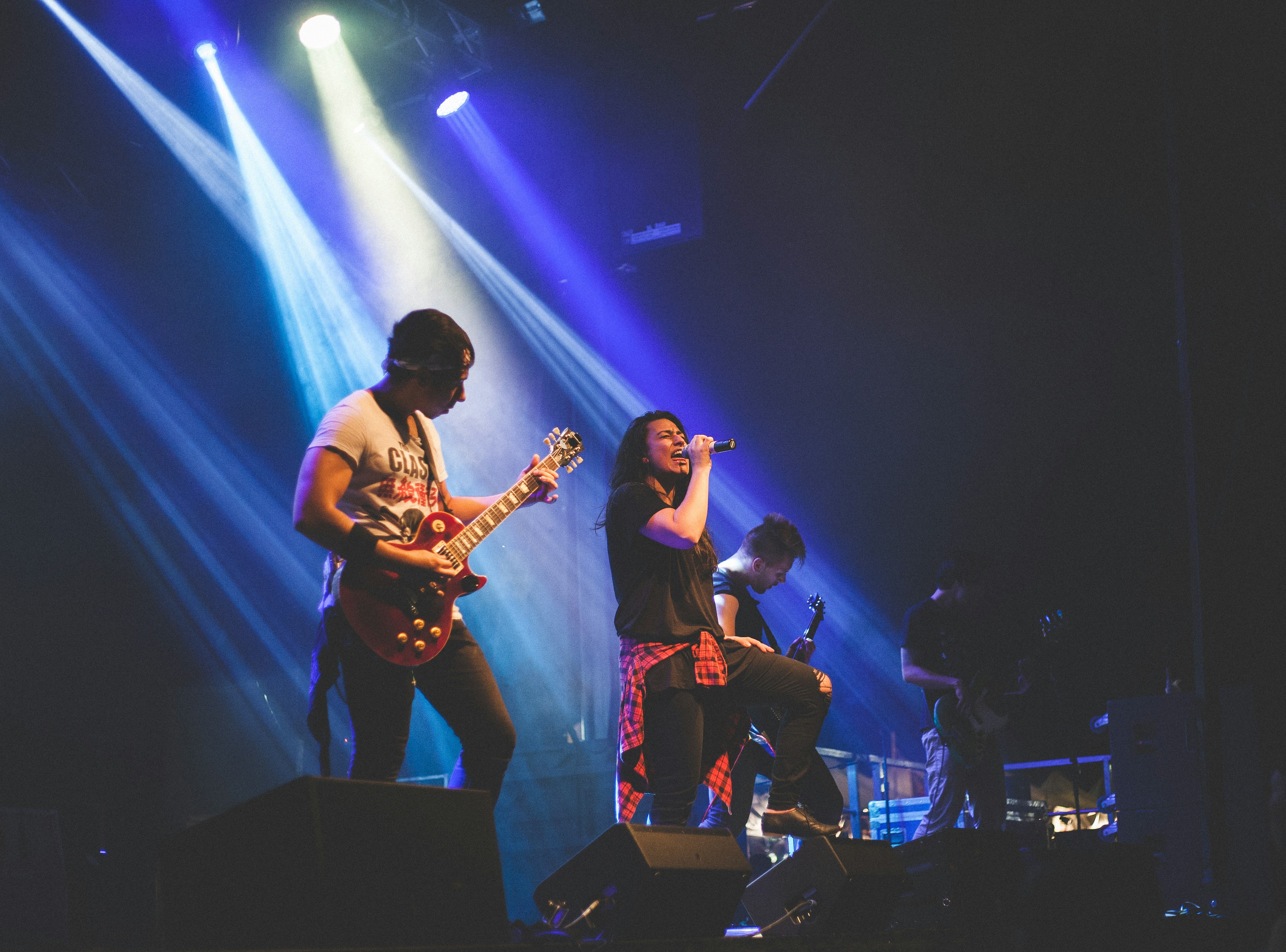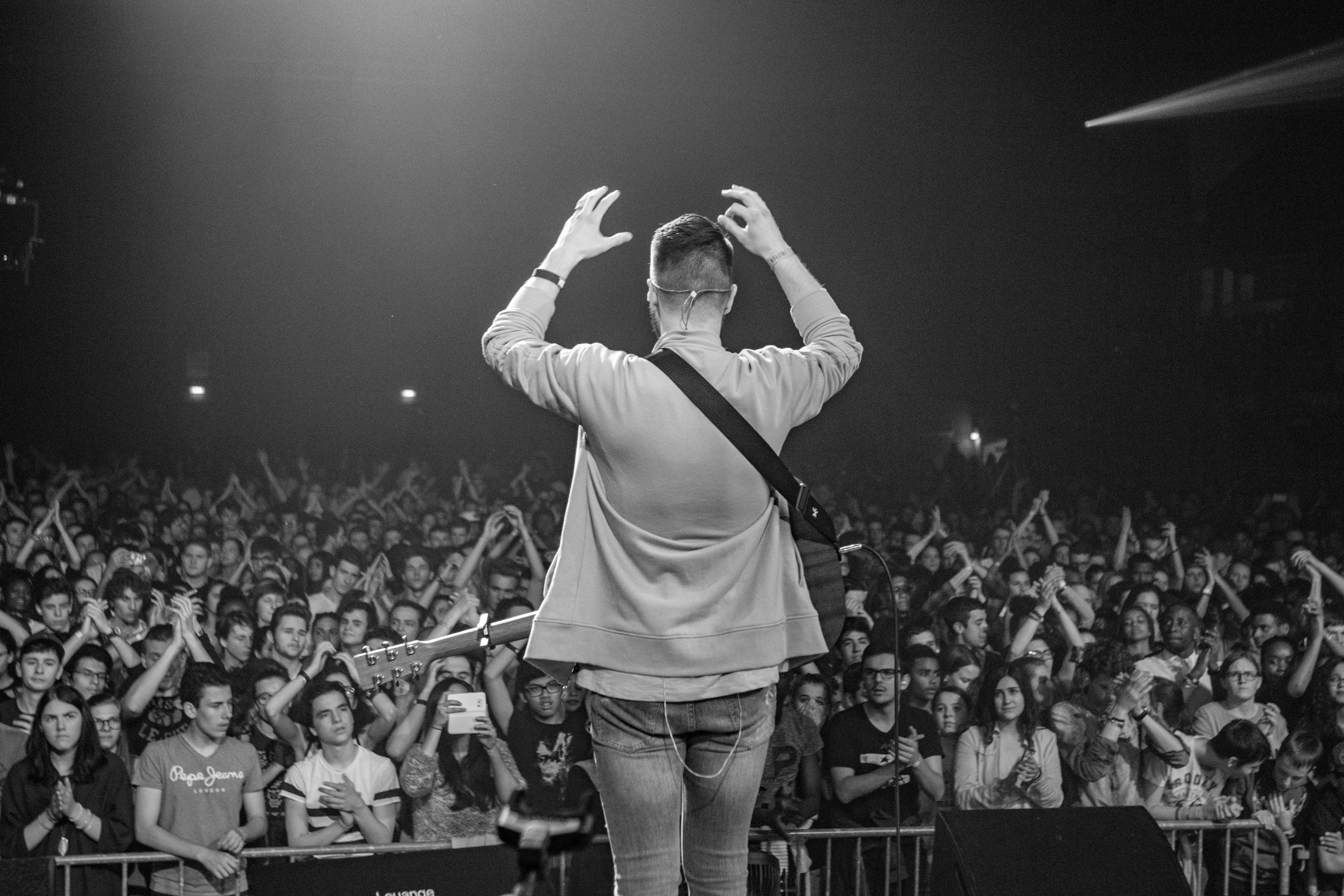12 Performing Live Stage Presence Tips for Musicians
by WriteSeen
Struggling with your live stage presence as a musician? You’re not alone. Mastering a compelling performance isn’t just about the music; it's about connecting with your audience.
This article offers the ultimate performing live stage presence tips for musicians, highlighting key strategies to elevate your live shows. Discover how to amplify your on-stage energy, engage more deeply with your fans, and turn every performance into an unforgettable experience.
1. Define Your Stage Persona
Crafting a standout stage persona is crucial for musicians looking to enhance their live performances. It's not just about the music—it's about creating a unique identity that resonates with your audience. A well-defined persona builds a bridge between you and your listeners. It speaks volumes about who you are and what your music represents.
- Authenticity is key. Align your persona with your music's style and lyrical themes. Consistency ensures that your audience knows exactly what to expect, making your performance more relatable.
- Visualize your identity. Your costume, stage props, and even facial expressions should reflect your artistic essence. It's your opportunity to visually express the stories your music tells.
- Stay memorable. A distinct persona distinguishes you from others. This uniqueness can transform first-time listeners into loyal fans who share your performances, amplifying your reach.
A compelling stage persona doesn't just enhance your brand; it makes each concert a memorable narrative for your audience.

2. Use the Entire Stage
The stage is your canvas—painting with movement commands attention and adds dynamism to your performance. Flexibility in how you use the space can significantly alter the energy of your show and engage the audience fully.
- Break down barriers. Moving around the stage makes every corner of the venue feel included, drawing in audience members from all angles.
- Create visual interest. Change positions to maintain visual energy. This keeps the show from feeling static and holds the audience's attention.
- Improve sound dynamics. Movement affects sound projection. Utilize different spots to highlight acoustic characteristics, creating a varied auditory experience.
Using the entire stage is about more than just showmanship—it's about inviting your audience to share in a lively, all-encompassing musical journey.
3. Master Your Body Language
Your body language is a powerful tool—sometimes speaking more loudly than words or music alone. Posture, gestures, and eye contact can make or break the audience's connection to your performance.
- Confidence speaks volumes. Stand strong and use open gestures to appear approachable and engaged. It's key to capturing and maintaining audience attention.
- Use eye contact. Forge connections by making eye contact with individual audience members. This personal touch makes viewers feel directly involved in your performance.
- Tell a story. Utilize your body to interpret lyrics and melodies. How you move can emphasize passion or emotion, offering the audience a full sensory experience.
Mastering body language transforms your performance from a simple auditory experience into a captivating, multi-dimensional event.
4. Choose Impactful Outfits
Your outfit isn't just clothing—it's an extension of your music and persona. Wearing the right ensemble not only enhances the visual aspect of your performance but also reinforces your brand.
- Reflect your music. Choose attire that echoes the themes of your songs. This connection deepens audience understanding and appreciation.
- Stand out. Unique outfits can become iconic hallmarks of your brand, aiding memorability and recognition across platforms.
- Ensure comfort. While style is essential, comfort allows you to focus entirely on your performance without wardrobe distractions.
Outfits carry more weight than they appear. They shape the narrative you present on stage, reinforcing your identity to every observer.
5. Engage Your Audience
Engagement transforms spectators into participants, creating a shared experience that leaves a lasting impact. Without engagement, a show is merely a static display of talent.
- Incorporate the crowd. Use call-and-response techniques or invite sing-alongs—these interactions heighten the collective experience and show appreciation for the audience's presence.
- Share stories. Break between songs to share personal anecdotes or insights into your creative process. This connection goes beyond music, allowing fans to relate to you as a person.
- Body language speaks. Encourage fans to clap or move along through non-verbal cues, fostering interaction without words.
Effective engagement is a dialogue. It unifies the audience under your sound yet offers each person a unique, personal takeaway.

6. Fill the Silence Between Songs
Momentum between songs is crucial—silence can deflate the energy of your show. Keeping the atmosphere lively ensures a seamless flow from one hit to the next.
- Keep it lively. Use banter or humorous anecdotes to maintain a connection with your audience, adding spontaneous excitement to the show.
- Introduce songs. Share insights or the stories behind the next song, setting the stage for deeper audience involvement.
- Smooth transitions. Develop musical interludes or improvise melodies to fill gaps, preserving the performance's rhythmic consistency.
Mastering transitions smooths over potential gaps, maintaining the energy that keeps the audience enthralled from start to finish.
7. Record and Review Your Performances
Recording your performances is not just for posterity—it's a vital tool for self-improvement and audience understanding. Revisiting these recordings helps you grow, refine, and reach your true stage potential.
- Self-assessment tool. Recordings capture nuances of your performance that you might miss in the moment, offering a mirror to your on-stage presence.
- Audience feedback. Analyzing crowd reactions reveals what resonates, allowing you to amplify successful elements in future shows.
- Growth tracker. Regular recording and review chronicles your progress and development, providing tangible proof of your journey.
Engaging in performance reviews fosters a cycle of continuous improvement, ensuring each show is more compelling than the last.
8. Cultivate High Energy
Ramping up your energy level on stage can transform a good performance into an unforgettable one. High energy isn't just about jumping around; it’s about creating a palpable connection with your audience. Your enthusiasm is contagious—spread it wisely.
- Stamina is your friend. Being physically prepared helps maintain energy throughout a set. Regular exercise increases endurance, ensuring you don't flag midway.
- Find your rituals. Whether it's a quick jog around the stage or a mental pep talk, personal pre-show rituals focus your energy. These routines prepare both your mind and body for the task ahead.
- Feed your body right. Nutrition fuels performance. Focus on a balanced diet and stay hydrated—these basics are your body's powerhouse. Complex carbs and proteins give sustainable energy.
Performing with high energy lets you captivate and involve your audience. It’s about more than just movement—it's about creating a dynamic atmosphere that pulses with every beat.

9. Watch and Learn from Great Performers
Looking to boost your stage presence? Watching great performers offers a masterclass in live delivery. By dissecting their methods, you gain insights applicable to your performances.
- Observe stage dynamics. How do they move? When do they pause? Studying these elements can provide clear examples to adapt for your shows.
- Dial into interactions. Notice how performers engage their audiences—are there patterns? Break down their engagement strategies to see how you might implement them.
- Note the visuals. What stands out in their attire or lighting? The visual side of performance can be just as powerful as the sonic one.
Gaining inspiration from successful artists encourages creative growth. Adapt and mold their techniques to suit your own style—it's about evolution, not imitation.
10. Practice Visualization Techniques
Visualization isn't just for athletes; it’s a powerful tool for musicians looking to conquer the stage. Mentally mapping out your performance helps reduce anxiety and increase confidence.
- See your success. Run through the performance in your mind, imagining everything from the crowd’s reactions to how you handle transitions. This prepares you for diverse scenarios.
- Alleviate nerves. Familiarity breeds confidence. Visualizing repeatedly helps in controlling stage fright by creating a mental 'muscle memory.'
- Perfect your timing. Mental rehearsals can help you nail timing and key changes, reinforcing muscle memory.
Visualization is about priming your mind for success and anticipating challenges. It’s a mental dress rehearsal that allows you to step onto the stage with confidence.
The most powerful tool you have on stage is your own belief in your performance.
11. Collaborate and Interact with Band Members
On-stage chemistry doesn't only affect how your band sounds, but also how your performance feels. Interaction with your fellow musicians enhances the show’s cohesiveness and presence.
- Synchronization matters. Plan your movements to create an engaging visual while maintaining sound quality. Harmony in movement underscores musical unity.
- Spontaneity boosts appeal. Well-timed, unrehearsed moments create genuine connections. They can be the highlight that gets audiences talking.
- Show respect and rapport. Displaying camaraderie not only aids band dynamics but also increases the audience's enjoyment. Mutual respect creates a better show environment.
Collaborating in real-time brings an organic feel to your performance. This spontaneity and unity engage audiences by showing a team committed to delivering a seamless musical experience.
12. Embrace Mistakes with Poise
Mistakes on stage are inevitable—they can also be a powerful part of live performance. Handling them with grace demonstrates professionalism and keeps your show on track.
- Stay calm; stay cool. Maintain your composure, even in error. A calming smile or chuckle can defuse tension and keep the audience on your side.
- Flip the script. Turn mistakes into a moment. A spirited recovery not only saves the performance but adds a memorable human touch.
- Learn and adapt. Each mistake is an opportunity. Use it to refine your strategy and avoid similar pitfalls in future performances.
Mistakes connect you with your audience by highlighting your authenticity. Master these blips to keep the energy flowing and showcase resilience as an artist.
Conclusion: Transformative Stage Performances
Every musician dreams of leaving a high-impact impression with their live performances. These stage presence tips aim to empower you in creating dynamic, engaging shows that resonate deeply with your audience. From defining who you are on stage and mastering body language to embracing mishaps and inspiring through high energy, adopting these strategies can elevate your act from ordinary to extraordinary.
Your stage presence is a reflection of your unique artistry—make sure it shines through every move and every note. Implement these techniques, and you'll soon see a transformation in not only your audience's reactions but also in how you feel performing live.
TAGS
